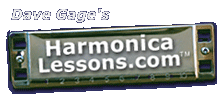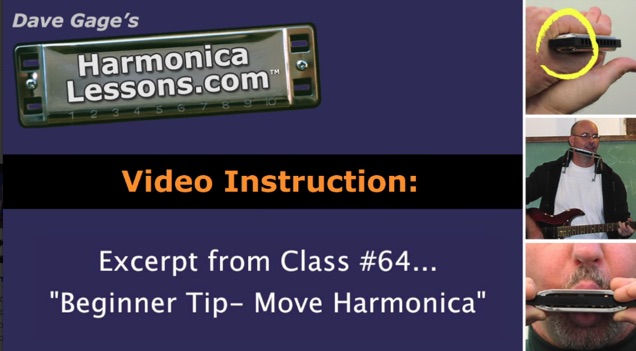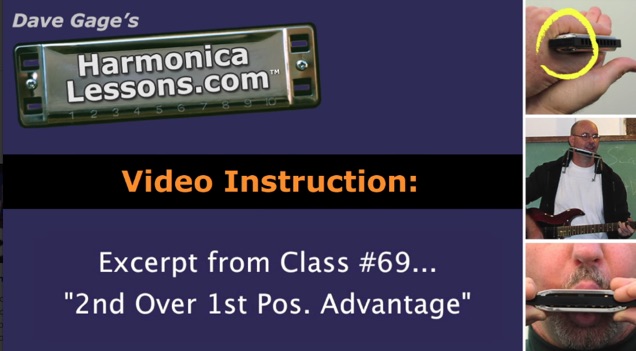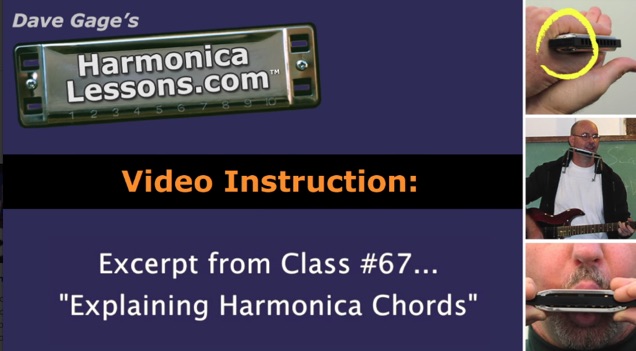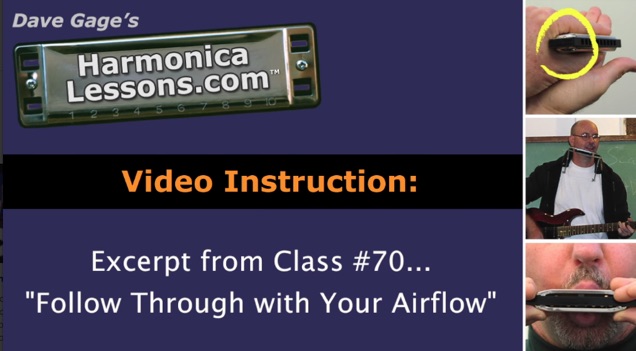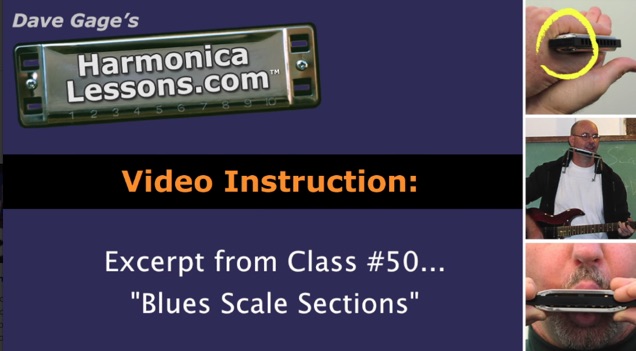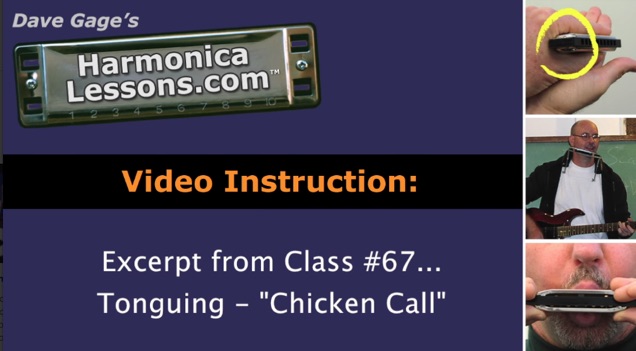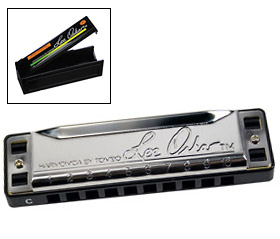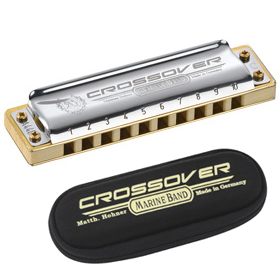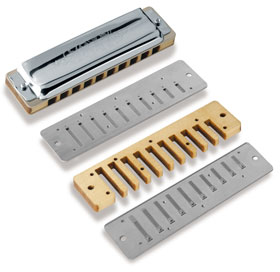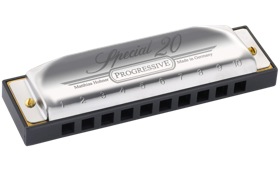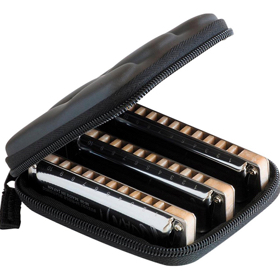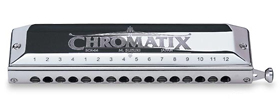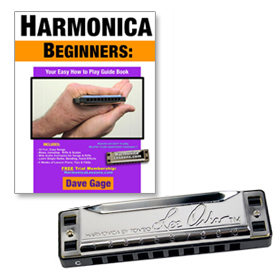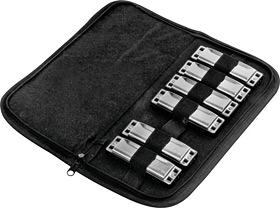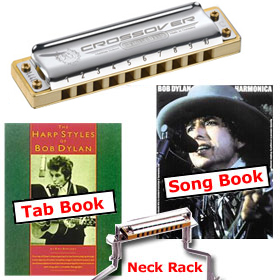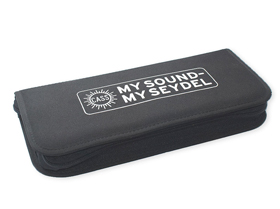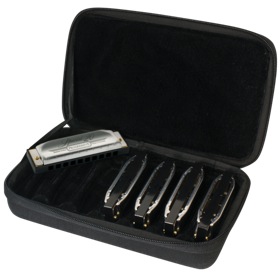Blues Harmonica Riffs & Licks
Many of the advanced-beginner/intermediate level blues harmonica riffs below (sometimes called blues harp licks), involve the use of bent notes and hole 2 Draw. If you are just starting out, take a look at the Beginning Blues: Almost Blues Scale page (in our Members Area with Video) which also includes the simpler "ABS Riffs" (Almost Blues Scale Riffs) (also available in our Members Area).
*Scroll down past the blues riffs and audio examples for General Information and further explanations.
*Scroll down past the blues riffs and audio examples for General Information and further explanations.
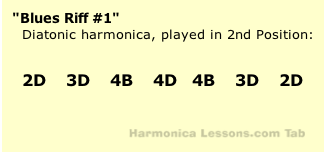
AUDIO: "Blues Riff #1"
If you have difficulty playing the hole 2 Draw note, you can substitute the hole 3 Blow for 2 Draw until you have the ability to make the hole 2 Draw come out correctly. 2nd Position in the key of "G" on a "C" diatonic.
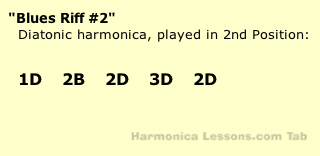
AUDIO: "Blues Riff #2"
2nd Position in the key of "G" on a "C" diatonic.
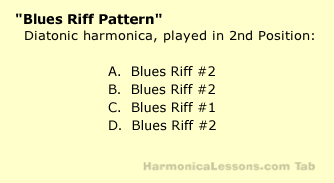
AUDIO: "Blues Riff Pattern"
Examples played followed by some explanation. 2nd Position in the key of "G" on a "C" diatonic.
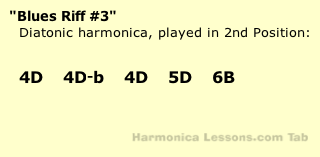
AUDIO: "Blues Riff #3"
Examples played followed by some explanation. 2nd Position in the key of "G" on a "C" diatonic.
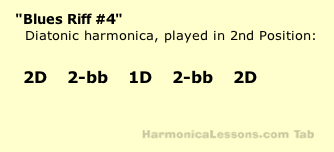
AUDIO: "Blues Riff #4"
This is not only a classic great sounding blues riff, but also the perfect place to practice and improve your hole 2 Draw bend. 2nd Position in the key of "G" on a "C" diatonic.
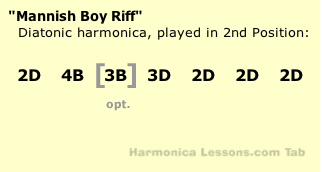
AUDIO: "Mannish Boy Riff"
The first two played examples leave off the repeated hole 2 Draw at end of riff. The next example plays the riff 4 times in a row and adding the extra hole 2 Draws at end. Then, the following example includes the optional hole 3B (after hole 4B) for slower tempo songs. 2nd Position in the key of "G" on a "C" diatonic.
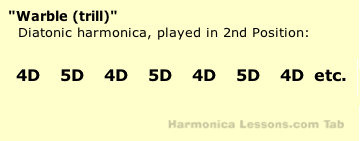
AUDIO: "Warble"
A very common blues sound/technique. The tempo is kept very slow here for those new to the warble. For a more in-depth study of the warble, visit the Warbles Technique page. 2nd Position in the key of "G" on a "C" diatonic.
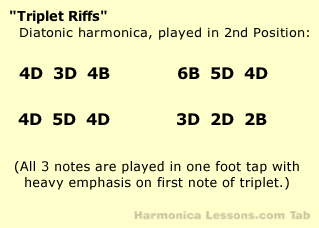
AUDIO: "Triplet Riffs"
Examples of the 4 triplets followed by explanation of the difference between shuffled and straight 1/8 notes. Click here for our Theory section which will give you a more in-depth look at "Straight vs. Shuffle 1/8 notes". Then, emphasis on the first note of the triplet is explained and demonstrated. 2nd Position in the key of "G" on a "C" diatonic.
- "Text Tab" system of music notation- Tabs are a simplified way to notate harmonica solos, harmonica parts, and melodies or songs, without having to formally read music. Below is an example of our text tab system for 10-hole diatonic harmonica.

The 10-hole diatonic "text tab" system.
- Blues Riffs- A riff is a slang term for a short musical phrase that is usually repeated or repeatable. Simple blues riffs are perhaps the most common way for one to begin improvising on the diatonic harmonica. Use repetition of a single riff, and pauses between these riffs, to create a more melodic feeling to your playing.
- All riffs are played in the 2nd Position (also called "Cross Harp" or "Blues Harp Style")- For more information on 2nd Position , visit the General Overview section.
- Use your own timing- Except for the triplet riffs, you can use your own timing with these riffs to make them fit into whatever song you are playing with. Listen to the sound file below the riffs to help get you started.
- Problem with the hole 2 Draw- If you have a problem with the hole 2 Draw you can substitute the hole 3 Blow until you have the ability to make the hole 2 Draw come out correctly.
- "Jam-To" Blues MIDI File- If you would like a quick, easy background song to begin jamming to, you can use the "Jam-To" MIDI File in "G" to try out the different riffs and ideas outlined here. Additional MIDI files are also available.
